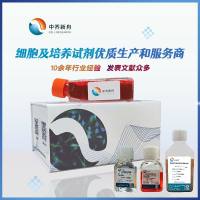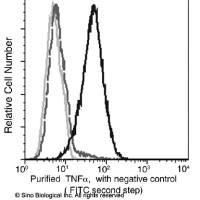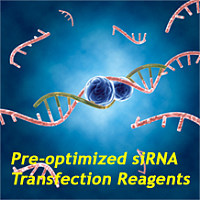Culture of Mouse Olfactory Sensory Neurons
互联网
- Abstract
- Table of Contents
- Materials
- Figures
- Literature Cited
Abstract
Olfactory sensory neurons, located in the nasal epithelium, detect and transmit odorant information to the central nervous system. This requires that these neurons form specific neuronal connections within the olfactory bulb and express receptors and signaling molecules specific for these functions. This protocol describes a primary olfactory sensory neuron culture technique that allows in vitro investigation of olfactory sensory neuron differentiation, axon outgrowth, odorant receptor expression, and function. Olfactory epithelium is obtained from the nasal cavity and is enzymatically treated to reduce stroma tissue. Dissociated olfactory sensory neurons are cultured directly on a layer of cortical astrocytes to support their survival. Using this method, cultured olfactory sensory neurons maintain their bipolar morphology and express odorant signal transduction molecules, which are specific for olfactory sensory neurons. Curr. Protoc. Neurosci. 58:3.24.1?3.24.14. © 2012 by John Wiley & Sons, Inc.
Keywords: olfactory epithelium; bipolar; astrocytes; lentivirus; odorant receptor
Table of Contents
- Introduction
- Basic Protocol 1: Culture of Primary Mouse Olfactory Sensory Neurons
- Support Protocol 1: Preparation of Glass Coverslips
- Support Protocol 2: Purification and Culturing Mouse Cortical Astrocytes
- Support Protocol 3: Immunochemistry of OSN Culture
- Reagents and Solutions
- Commentary
- Literature Cited
- Figures
Materials
Basic Protocol 1: Culture of Primary Mouse Olfactory Sensory Neurons
Materials
Support Protocol 1: Preparation of Glass Coverslips
Materials
Support Protocol 2: Purification and Culturing Mouse Cortical Astrocytes
Materials
Support Protocol 3: Immunochemistry of OSN Culture
Materials
|
Figures
-

Figure 3.24.1 Dissection and isolation of olfactory neuroepithelium. (A ) Dorsal view of a neonatal mouse head. A line through the midsagittal plan indicates where the cut is. (B ) Sagittal view of the opened nasal cavity. Nasal epithelium (OE) is circled. Olfactory bulb (OB) is located superior to the nasal cavity. (C ‐D ) Different views of the dissected nasal epithelia with cartilage tissue attached. Arrowhead in C points to the nasal septum. (E ) Olfactory epithelium with underlining stroma. Arrowhead in E points to the separated stroma, which appear opaque under the stereomicroscope. (F ) Isolated olfactory neuroepithelial appear transparent under the stereomicroscope. Bar = 1 mm in A and B; 1 mm in C and D; 2 mm in E and F. View Image -

Figure 3.24.2 Morphology and gene expression of cultured OSNs. (A ) OSNs are identified by expression of type III β‐tubulin. Sensory neurons are cultured at low density with each individual neuron extending processes without contacting other neurons. Majority of cultured neurons are bipolar in morphology. (B ‐D ) At 3 DIV, cultured OSNs exhibit bipolar morphology with a short, thick dendritic process and a long, thin axonal process. These neurons express neuronal markers, GAP43 (B), type III b‐tubulin (C) and NCAM (D). (E ‐F ) At 6 DIV, cultured OSNs express odorant signaling molecules, Golf (E) and AC3 (F). Bar, 60 µm in A; 20 µm in B‐F. View Image
Videos
Literature Cited
| Literature Cited | |
| Ayadi, A., Ferrand, G., Cruz, I.G.d., and Warot, X. 2011. Mouse breeding and colony management. Curr. Protoc. Mouse Biol. 1:239‐264. | |
| Chen, H., Dadsetan, S., Fomina, A.F., and Gong, Q. 2008. Expressing exogenous functional odorant receptors in cultured olfactory sensory neurons. Neural Develop. 3:22. | |
| Ekberg, J.A., Amaya, D., Chehrehasa, F., Lineburg, K., Claxton, C., Windus, L.C., Key, B., Mackay‐Sim, A., and St John, J.A. 2011. OMP‐ZsGreen fluorescent protein transgenic mice for visualisation of olfactory sensory neurons in vivo and in vitro. J. Neurosci. Methods 196:88‐98. | |
| Farbman, A.I. 1992. Cell Biology of Olfaction. Cambridge University Press, New York. | |
| Goslin, K., Asmussen, H., and Banker, G. 1998. Rat hippocampal neurons in low‐density culture. In Culturing Nerve Cells (G. Banker and K. Goslin, eds.) pp. 339‐369. MIT Press, London. | |
| Grill, R.J. and Pixley, S.K. 1997. In vitro generation of adult rat olfactory sensory neurons and regulation of maturation by coculture with CNS tissues. J. Neurosci. 17:3120‐3127. | |
| Mombaerts, P. 2006. Axonal wiring in the mouse olfactory system. Annu. Rev. Cell. Dev. Biol. 22:713‐737. | |
| Moon, C., Yoo, J.Y., Matarazzo, V., Sung, Y.K., Kim, E.J., and Ronnett, G.V. 2002. Leukemia inhibitory factor inhibits neuronal terminal differentiation through STAT3 activation. Proc. Natl. Acad. Sci. U.S.A. 99:9015‐9020. | |
| Packard, A., Schnittke, N., Romano, R.A., Sinha, S., and Schwob, J.E. 2011. DeltaNp63 regulates stem cell dynamics in the mammalian olfactory epithelium. J. Neurosci. 31:8748‐8759. | |
| Phelan, M.C. 2006. Techniques for mammalian cell tissue culture. Curr. Protoc. Mol. Biol. 74:A.3F.1‐A.3F.18. | |
| Weinstein, D.E. 2001. Isolation and purification of primary rodent astrocytes. Curr. Protoc. Neurosci. 1:3.5.1‐3.5.9. | |
| Zhuang, H. and Matsunami, H. 2007. Synergism of accessory factors in functional expression of mammalian odorant receptors. J. Biol. Chem. 282:15284‐15293. |









